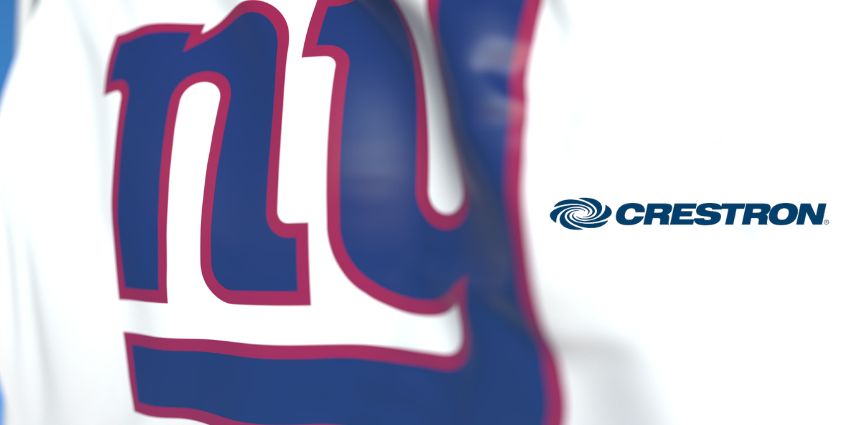The communication landscape has experienced a rapid transformation.
Today, we have more ways to connect than ever before. Team collaboration apps provide instant messaging and file sharing. Video conferencing systems and VCaaS make face-to-face conversations digital.
You can even share your entire screen in seconds with the right tool. Yet, despite all this evolution, voice is still at the heart of most communication. We turn to voice when we need clarity and human empathy in a conversation. This means that the endpoints available to support voice communication are still as essential today as they’ve ever been.
Conference phones are just one example of these essential endpoints. A conference phone brings teams together in talks with stakeholders, contractors, and clients.
The conference phone isn’t an entirely new concept. However, the kind of conference experiences that we can create with the latest devices on the market are a world apart from what we’re used to. There is an 11.5% CAGR growth rate for conference phone technology and meeting room endpoints today.
Here’s your guide to conference phones.
What is a Conference Phone?
A conference phone is a tool that supports group communication. These tools capture multiple voices in a meeting space or huddle room. This allows for intuitive brainstorming sessions, meetings, and even product demonstrations.
Over the years. the definition of the conference phone has evolved. It now includes more advanced features, such as integrations with video services.
As businesses evolve and remote working grows more popular, conference phones are changing. Today, they allow teams to maintain professional conversations with remote employees.
However, these devices also open the door for better conversations with teams from different branches in a global business. You can turn to your conference phone to address client and customer concerns when a conversation with a single employee isn’t enough.
At their heart, conference phones require a few crucial things to be effective. For instance, your phone must be able to deliver the right bandwidth for a professional call. Conference phones also need to be strong enough to suit the needs of a specific kind of meeting room. Some solutions come with things like beam-forming microphones today. This allows the phone to collect audio from a larger space without distortion.
On top of that, conference phones also need to integrate with call management tools. This ensures businesses can record conversations, track quality, and more.
Along with these standard “table-stakes” functions, modern conference phones can do more than ever before. You can find conferencing phones that can intelligently recognise human voices. There are phones that automatically remove unwanted noise from a meeting.
The possibilities of the conference call are evolving.
Conference Phone Trends
A conference phone used to be a basic endpoint in the business landscape. It was a device you could use to pick up multiple voices at once without too much disruption. Occasionally, older conference phones also came with screens to help you dial other attendees into a meeting.
In previous years, the biggest concerns that most companies faced when choosing a conference phone revolved around things like avoiding echo or reverb. While it’s still crucial to ensure that your phones deliver the right audio quality today, more opportunities are emerging. For instance:
- Multi-media conference phones: Android-enabled conferencing phones can access API and SDK solutions to make the conference call a more multi-media experience. For instance, Microsoft’s Teams API ensures that you can tap into your collaboration tools while you’re in the midst of a conference call. Device-agnostic integrations with endpoints like cameras and screens also support better content sharing and media options.
- Digital assistants: The demand for intelligent assistants has increased drastically in recent years. People have discovered through smart speakers and smartphone assistants; how helpful smart systems can be. In the conference room, an assistant in a conference phone might be able to start a meeting in seconds or begin recording with nothing but a voice command. Companies are even experimenting with digital assistants for transcribing meetings or taking notes for employees during a call.
- Artificial Intelligence: AI in conference calls can deliver more than just virtual assistants. Intelligent algorithms can also detect noise automatically and remove any distortion from a call. Being able to separate human voices from excess sound means that technology can improve the clarity of meetings.
- Huddle rooms: Conference phones are quickly evolving to suit the needs of smaller spaces. As huddle rooms gradually become more popular than large boardroom spaces, conference phones are now available for much smaller environments. These tools can even come as part of plug-and-play endpoint room kits. With a UC room kit, businesses can access everything they need for a meeting in seconds, including voice, video, and content sharing.
- Creative technology: As technology continues to evolve with the rise of things like IoT and 5G, conference phones may become even more advanced. Some vendors are already experimenting with bringing AR and VR technology into the meeting room. Businesses may even be able to integrate their conference phones with holographic projectors, offering a more futuristic collaborative experience.
Read our Conference Phone Trends Round Table with leading vendors
Conference Phone Vendors
As the exciting opportunities within the conference phone landscape continue to evolve, leading vendors are joining forces with other contenders to reach their goals. In recent years, we’ve seen more businesses consolidating their technology stacks. Polycom and Plantronics are one excellent example of this space.
At the same time, many conference phone vendors are also working with software providers to offer more unique experiences. Companies like Microsoft and Zoom have dedicated hardware partners that can provide conference phones specially designed to work with collaboration tools.
All the while, even as the technology associated with conference phones becomes more complex, the devices themselves are becoming easier to use. Today’s leading vendors know that if they want to get ahead of the competition, they need to deliver a great experience. The best conference phones are the ones that offer simple and intuitive experiences.
Many modern tools can connect immediately to a UC system using nothing but a USB cable. This is excellent for an environment where there are now more than 32.4 million huddle rooms worldwide. A plug-and-play experience is essential to starting meetings quickly. Vendors are rapidly replacing complexity with simplicity and speed, offering everything that teams need in a convenient bundle.
Leading vendors from Poly and Yealink to Cisco and Jabra are experimenting with new ways to make the user experience more engaging in the meeting room. This means adding virtual assistants that can record a meeting instantly with just one command and implementing AI tools that can analyse the success of a meeting in real-time.
If you want an insight into the conference phone vendors leading the way to the meetings of tomorrow, check out the winners of our UC Awards event. Alternatively, you can visit our directory of Conference Phone vendors for more information.
Conference Phone Events
As the definition of the conference phone becomes more complex, the best way to keep track of the marketplace is by visiting leading events and expos. It’s during these worldwide events that leading companies demonstrate the latest features that they’ve discovered to change the way that we meet and communicate. Modern businesses are showing off the potential of the huddle room, with unique wide-angle cameras that can see more people in the same space.
These cameras are combined with conference phones that can easily detect human voices and give them clarity – even in a space where there might be a lot of background noise. Leading conference phones can block out the sounds of papers rustling and chairs squeaking, even in compact spaces.
Many market leaders are also turning to events as a chance to demonstrate their conference phones as part of a room kit solution. As VCaaS and CPaaS become more popular, companies are searching for new and improved ways to start meetings as quickly and painlessly as possible. Within conference room events, businesses can examine how a conference phone would work as part of either a small or large room experience.
Here at UC Today, we help you to stay one step ahead of the biggest conference room events with insights from all of the leading companies on the market. We visit conferences and expos around the world to bring you the latest news and updates. Check out our events page to learn more!
Conference Phone Reviews
No matter the size of your business, or the industry you’re in, conference phones can help to boost productivity and performance in any team. While the nature of conference phones might be evolving, the time and effort companies need to put into making the right choice remains the same.
From making sure that you have the clearest possible sound, to picking an interface that your employees feel comfortable using, choosing the ideal conference phone can be challenging. That’s why the team at UC Today does the hard work for you by reviewing some of the most popular hardware on the market.
Our conference phone reviews will give you an insight into everything you need to know about the latest tech from the leading brands, including:
- Accessibility: How easy is the conference phone to use? Does it come as part of a plug-and-play room kit that you can use in your huddle rooms? Will you be able to connect your conference phone to your collaboration tools, like Microsoft Teams?
- What is the sound quality like? How clear will your voice be to the people on the other end of the call? Does the conference phone use the latest beam-forming microphone technology to collect crucial voices from everywhere in your conference room? How good is the equipment at blocking out external sound that you don’t want?
- Integration: How well will the conference phone work with the existing tools that your business uses, such as video cameras for conferencing, and microphones? Can you add extra functionality to your phone through API and SDK solutions?
- Features: What kind of essential features does this conference phone include? Can you record your meetings at the touch of a button, or with a voice command? Is there a digital assistant that can transcribe meetings and take minute notes on your behalf? Will you be able to expand on the functionality of the conference phone with software updates later?
- Signal processing: How impressive are the signal processing functions? Can you access things like built-in noise reduction, speaker tracking that happens automatically, and echo cancellation. Is human voice activity detection included as standard, along with de-reverberation controls?
Explore our conference phone reviews for more insights into what the leading products on the market today can do for your team.
Conference Phone Comparisons
After considering our reviews, you may need to choose between a few top contenders. Often, this means doing further research into how two phones measure up.
Here at UC Today, we conduct comparisons between leading conference phone solutions, to help you find the one that’s best suited to your team. After all, no company can abide by muffled calls and poor collaboration experiences. The points you look at when conducting your comparisons will differ depending on your unique needs. But we recommend considering some of the following points:
- Accessibility Your conference phone should be easy to use and flexible to suit your needs. Make sure that you know what kind of room you’re shopping for in advance and choose a conference phone tailored to that space.
- Future tech needs: You might not need AI today, but it’s worth keeping an open mind. Choosing a phone vendor that’s willing to roll out software updates and new features in the future could help you to future-proof your business.
- Performance: Remember, the technology in your phone should be able to deliver excellent experiences. That means great bandwidth with minimal reverberation, noise, or echo. Many of the leading conference phone providers can offer excellent sound quality today.
UC Today Conference Phones Smart Guide
Conference phones might not be one of the newer tools in the communication hardware landscape, but they’re still relevant today. A conference phone is often at the heart of many group meeting sessions in the workplace. Getting the right phone, with the technology that can support and empower your team members, could lead to better meeting sessions.
If you want to learn more about conference phones and how they’re evolving, make sure you check out our full UC Today IP Endpoints & Accessories Smart Guide. We’ve covered everything you need to know about conference phone technology and other crucial endpoints in the UC space.
Download your UC Today IP Endpoints & Accessories Smart Guide today.







